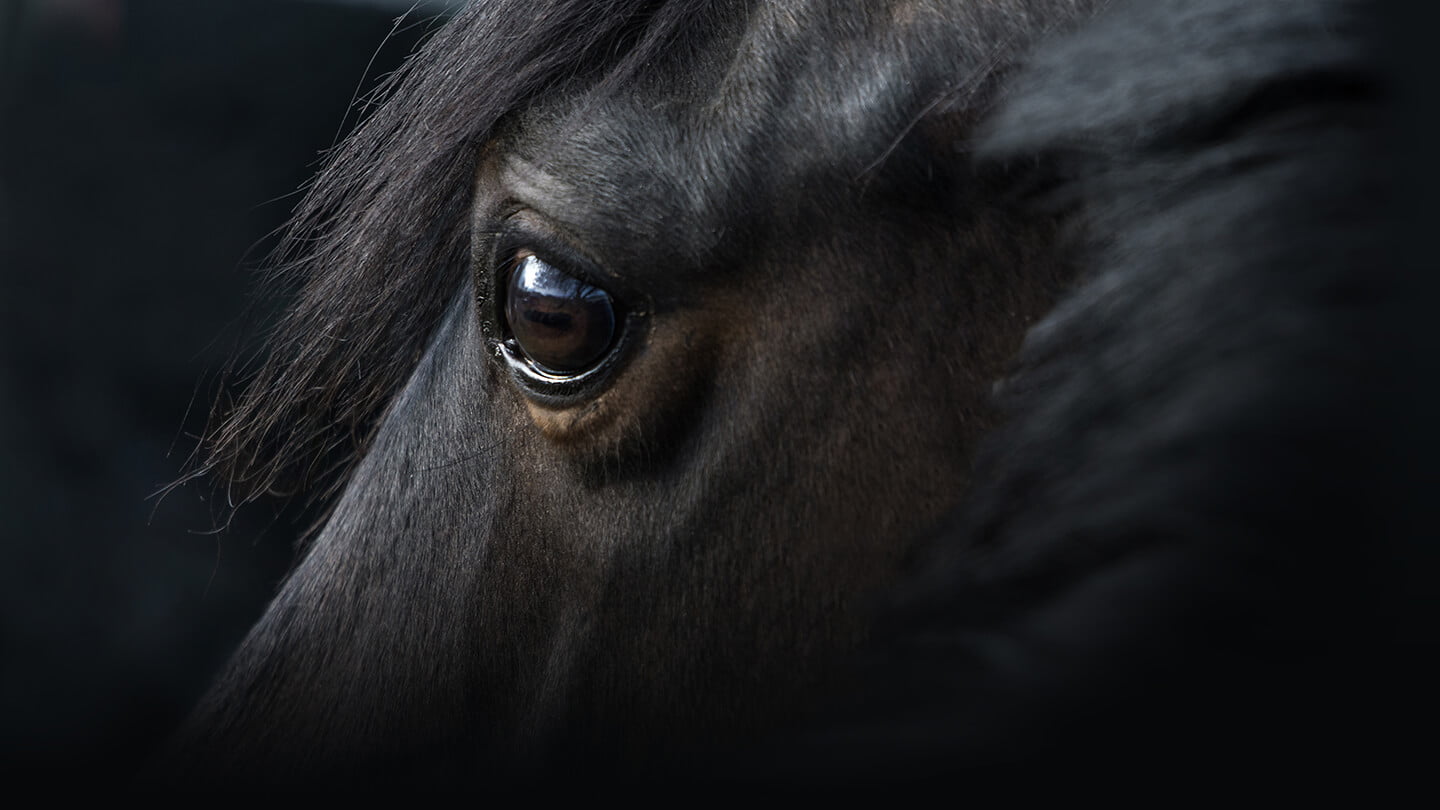Understanding the horse digestive system is key to keeping your horse healthy. This article explains the anatomy, function, common issues, and feeding tips to ensure optimal digestive health.
Key Takeaways
- The horse’s digestive system is divided into the foregut and hindgut, each playing essential roles in processing fibrous plant material for nutrient absorption.
- Proper feeding strategies include providing a forage-based diet, small frequent meals, and limited grain intake to prevent digestive disorders like colic and ulcers.
- Routine care, including dental health and parasite control, is vital to maintaining digestive health and preventing complications in horses.
Anatomy of the Horse’s Digestive System
The horse’s digestive system is a marvel of evolution, designed to efficiently process a diet primarily composed of fibrous plant material. The system is divided into two main parts: the foregut and the hindgut, each playing a critical role in the overall digestive process and digestive processes. The foregut consists of the mouth, esophagus, stomach, and small intestine, where proteins, fats, and hydrolyzable carbohydrates are primarily digested. The hindgut, on the other hand, includes the cecum, large colon, small colon, and rectum, focusing on the fermentation and digestion of structural carbohydrates, all of which are part of the equine digestive tract.
The journey of food begins in the horse’s mouth, where it is grasped, chewed, and moistened before passing down the esophagus into the stomach. The stomach, although relatively small, plays a vital role in mixing food with stomach acid and enzymes to initiate digestion. The small intestine, following the stomach, is the hub for nutrient absorption, particularly for proteins, fats, and non-structural carbohydrates.
Once the partially digested food reaches the hindgut, the cecum acts as a fermentation vat, breaking down fibrous plant material with the help of gut microorganisms. This process continues in the large and small colon, where additional nutrients and water are absorbed, and finally, the rectum expels the waste as feces.
Understanding this intricate equine digestive anatomy is fundamental for horse owners to support their horse’s health and prevent digestive disorders.
The Foregut: Initial Stages of Digestion
Digestion in horses begins in the foregut, which includes the mouth, esophagus, stomach, and small intestine. Each component prepares the food for nutrient absorption and subsequent digestion in the hindgut.
The horse’s teeth and salivary glands grind the food and mix it with saliva in the mouth, starting digestion. The food then travels down the horse’s esophagus, a muscular tube that safely transports it to the stomach.
In the stomach, food mixes with stomach acid and digestive enzymes, preparing it for nutrient absorption in the small intestine. This coordination optimizes digestive health and nutrient absorption.
Mouth and Salivary Glands
The journey starts in the horse’s mouth, where incisors and molars chew the food into smaller pieces. The tongue pushes the food towards the molars for thorough grinding and draws water into the mouth, ensuring the food is broken down and mixed with saliva for easier swallowing and initial digestion.
Saliva lubricates the feed bolus, aiding its movement down the digestive tract. Chewing food stimulates saliva production, which contains enzymes that begin breaking down carbohydrates, setting the foundation for effective nutrient absorption.
Esophagus
The esophagus, measuring about 4 to 5 feet, acts as the conduit between the mouth and stomach, using peristaltic waves to transport chewed and moistened food efficiently.
This muscular tube is designed to handle the constant movement of food, preventing any backflow and ensuring that the digestive process continues smoothly.
Stomach Functionality
Though small, the horse’s abdomen plays a pivotal role in digestion. With an average capacity of 2 to 3 gallons, it constitutes about 10% of the digestive tract volume, necessitating frequent, smaller meals for optimal digestion.
The stomach mixes ingested food with acid and enzymes, breaking down proteins, fats, and non-structural carbohydrates. It has two regions: the glandular region, which secretes digestive acids, and the non-glandular region, more susceptible to ulcers. Food quickly passes from the stomach to the small intestine, usually within 15 to 45 minutes, ensuring efficient processing for nutrient absorption.
The glandular region is protected by a thick mucus layer, while the non-glandular region is more vulnerable to ulcers, especially with high grain intake or long periods without food. Proper feeding practices and regular monitoring are crucial to prevent digestive disorders and maintain gut health.
Small Intestine: Nutrient Absorption Hub
Spanning 50 to 70 feet, the small intestine is crucial for nutrient absorption, where proteins, fats, and hydrolyzable carbohydrates are absorbed. Unlike other domestic animals, horses lack a gall bladder; bile is continuously secreted into the small intestine to aid fat digestion.
The small intestine breaks down food particles further with digestive enzymes, ensuring efficient absorption of amino acids, fatty acids, and glucose into the bloodstream. Its significant length and specialized structure make it the hub for nutrient absorption.
Knowing how the small intestine functions helps horse owners make better feeding decisions. A diet that supports nutrient absorption ensures horses maintain optimal health and performance, reducing the risk of digestive disorders while considering equine nutrition.
The Hindgut: Fermentation and Fiber Digestion
The hind gut is where microbial fermentation occurs in the horse’s hindgut, allowing horses to digest fibrous plant material. This part includes:
- the cecum
- large colon
- small colon
- rectum
Each plays a role in fermenting and absorbing nutrients from fibrous carbohydrates. Fermentation breaks down fibrous plant material into volatile fatty acids, a significant energy source for horses.
Microorganisms in the hindgut produce lactic acid and other byproducts essential for gut health. Maintaining a pH range of 6.4 to 6.7 is crucial for healthy fermentation, as microbial populations can influence this balance. Disruptions can lead to acidosis, highlighting the need for proper diet and management practices.
Cecum
The cecum acts as a large fermentation vat where microorganisms break down fibrous materials. This process extracts nutrients from long-stemmed forages, providing the structural carbohydrates necessary for gut function and overall health. The cecum retains food for about 7 hours, allowing for effective fermentation and nutrient absorption.
Feeding forage first maintains gut health by providing necessary fiber and reducing risks associated with dry feeds and rapid dietary changes. This practice helps prevent colic and other digestive disorders, emphasizing the importance of a forage-based diet.
Large Colon
The large colon continues fermentation, absorbing volatile fatty acids, water, and electrolytes. It consists of the ventral and dorsal colon, together measuring about 10 to 12 feet. The left dorsal colon can sometimes lead to impaction colic due to its reduction in diameter at the pelvic flexure.
The large colon absorbs nutrients and water, maintaining hydration and overall health. It also secretes water and electrolytes back into the intestinal lumen, improving gut motility and ensuring smooth passage of digested material. The combined capacity of the large and small colon accounts for 40-50% of the digestive tract capacity.
Nearly 40% of colic cases result from large colon displacement or impaction, highlighting the importance of proper feeding practices and regular monitoring.
Small Colon and Rectum
The small colon absorbs moisture and forms fecal balls. As digested material moves through the descending colon, moisture is extracted, and it can form fecal balls ready for elimination. This process ensures the horse retains necessary water, maintaining hydration and health.
The rectum, a short, straight muscular tube, expels waste as feces. It takes about 36 to 72 hours for feed to travel through the entire digestive tract, highlighting the efficiency and complexity of the horse’s digestive system.
Common Digestive Disorders in Horses
Digestive disorders are a significant concern, with colic being one of the most common and serious conditions.
Colic can manifest in various forms, including:
- Impaction colic from inadequate water intake and coarse feed
- Twisting of the intestines, often requiring surgery
- Inguinal hernias
- Adhesions from previous surgeries
These conditions can lead to severe colic, emphasizing the importance of prompt care.
Gastric ulcers and stomach ulcers are another common issue, often resulting from excessive grain intake and long periods without food. Symptoms include weight loss, changes in appetite, and recurrent colic, making early recognition crucial. Horses with pasture access typically have a reduced risk of ulcers, highlighting the benefits of natural feeding behaviors.
Other common digestive disorders include enteroliths, stones in the intestine associated with high pH diets, and intestinal inflammation, which can cause abdominal pain and bleeding. Regular monitoring, proper feeding, and routine veterinary care are essential for preventing and managing these issues.
Feeding Strategies for Optimal Digestive Health
Feeding strategies are crucial for maintaining digestive health. Mimicking a horse’s natural eating pattern and diet can significantly reduce gastrointestinal illnesses. Owners should provide free-choice access to forage to align with natural foraging behaviors.
High-grain diets and large, infrequent meals can disrupt digestion, leading to colic and gastric ulcers. Feeding small, frequent meals that mimic natural grazing helps maintain a healthy digestive tract and supports overall nutrition.
Forage-Based Diet
A forage-based diet is essential for digestion. Horses should consume 2-2.5% of their body weight in dry matter daily, about 10 kg of hay for a typical 500 kg horse. Long-stemmed forages like grasses and legumes cut no shorter than 2 inches are crucial for chewing and digestion.
For older horses, softer hay that is easier to chew may be necessary to ensure adequate nutrition. A diet rich in fibrous plant material supports the gastrointestinal tract and overall digestive health.
Small, Frequent Meals
In the wild, horses graze up to 16 hours a day, an essential behavior for their diet and well-being. To mimic this, forage should be available in small amounts throughout the day. Small, frequent meals help prevent gastric ulcers and decrease the risk of colic by ensuring the stomach does not remain empty for long periods.
Providing multiple small meals daily protects against long periods of an empty stomach, crucial for maintaining gastric health and preventing digestive disorders, especially after a large meal, large meals, and larger meals.
Limiting Grain Intake
Feeding large amounts of grain in a single meal can lead to hindgut dysfunction and other digestive issues. The maximum amount of starch that should be fed to a horse in one meal is 1-2 grams per kilogram of body weight. Instead, fat- and fiber-based energy sources like soya hulls and beet pulp, as well as oils, can be used as alternatives to grains for meeting high energy requirements.
Limiting grain intake and choosing alternatives ensures that the digestive system remains balanced, reducing the risk of colic and other digestive disorders.
Hydration and Turnout
Adequate water intake is essential for digestion and body temperature regulation. Inadequate water intake can lead to dehydration, impaction colic, and gastric ulcers. Ensuring that horses have access to clean, fresh water at all times is crucial for maintaining overall health.
Regular turnout mimics natural behaviors, supports gut health, enables social interaction, and reduces stress. Access to fresh pasture can improve the gut microbiome and positively affect overall horse health.
Routine Care and Management Tips
Routine care and management are vital for preventing digestive disorders and maintaining a healthy digestive system in horses. Regular monitoring of feed intake, water consumption, and overall health is essential. Parasites are a frequent cause of digestive tract disorders in horses, so implementing a regular deworming protocol is crucial.
Understanding the speed of digestion for different feeds can help horse owners make informed decisions about diet and management practices. Ensuring that horses have access to high-quality, balanced feeds and making gradual dietary changes can prevent digestive disturbances and support overall gut health.
Dental Care
Dental care is essential for optimizing digestion in horses. Healthy teeth are crucial for grinding feed adequately, increasing the surface area available for digestive enzymes. Most horses should have dental floating performed yearly to maintain healthy teeth and prevent sharp edges from causing discomfort.
Routine dental exams help prevent painful issues arising from uneven wear of horse’s teeth, ensuring that they can chew food effectively and maintain optimal digestive health.
Gradual Dietary Changes
Introducing dietary changes slowly is crucial to avoid digestive disturbances. Gradual adjustments to a horse’s diet help maintain gut health and prevent colic. Making changes over a period of several weeks allows the horse’s digestive system to adapt, reducing the risk of digestive upset and ensuring optimal nutrient absorption.
Parasite Control
Parasites can significantly impact a horse’s digestive health. Parasitic infections can lead to:
- malabsorption of nutrients
- colic
- impaction
- even death
Regular fecal testing and appropriate deworming protocols are essential to ensure digestive health and prevent parasitic infections.
Routine examinations and deworming are crucial to maintaining a healthy digestive system and preventing issues that could compromise the horse’s overall well-being.
Supplements for Gut Health
Supplements can play a crucial role in supporting a horse’s digestive health. Probiotics are beneficial microorganisms that enhance fiber digestion and contribute positively to gut health. Prebiotics, such as mannan oligosaccharides (MOS), serve as nourishment for beneficial bacteria in the gut, supporting overall digestive function.
Fermented yeast products can stabilize the microbiome within the horse’s equine gut, promoting better digestion. Herbal ingredients like slippery elm and marshmallow root provide soothing effects to the digestive tract, while glutamine supports the integrity of the intestinal lining during stress or illness.
Calcium carbonate in antacid supplements helps manage stomach acid levels, ensuring a balanced digestive environment.
Supporting Digestive Health Through Better Nutrition
Understanding the horse’s digestive system is essential for ensuring optimal health and performance. From the anatomy of the foregut and hindgut to feeding strategies and common disorders, each component plays a critical role in the overall digestive process. By aligning feeding practices with natural foraging behaviors and providing proper care, horse owners can significantly reduce the risk of digestive disorders and support their horse’s well-being.
Incorporating supplements, ensuring adequate hydration, and maintaining regular dental and veterinary care are all vital for promoting gut health. Seminole Feed offers a range of nutritional options and resources to help support these essential practices, so horses can maintain a healthy digestive system and overall optimal health.
Frequently Asked Questions
Why is understanding the horse’s digestive system important?
Understanding the horse’s digestive system is essential for implementing effective feeding and management strategies that prevent digestive disorders and promote overall health and performance. This knowledge directly impacts the well-being of the horse.
What are the main components of the horse’s digestive system?
The horse’s digestive system consists of two main components: the foregut, which includes the mouth, esophagus, stomach, and small intestine, and the hindgut, comprising the cecum, large colon, small colon, and rectum. This division is essential for the horse’s digestion and nutrient absorption.
How can feeding practices impact a horse’s digestive health?
Feeding practices that resemble natural foraging, such as providing free-choice forage and limiting grain intake, significantly enhance a horse’s digestive health and lower the risk of colic and gastric ulcers. Implementing these methods is crucial for maintaining optimal digestive function.
What role do supplements play in supporting gut health?
Supplements, including probiotics, prebiotics, and fermented products, play an essential role in supporting gut health by enhancing fiber digestion, stabilizing the gut microbiome, and soothing the digestive tract. Their incorporation can lead to improved overall digestive health.
How can routine care and management prevent digestive issues in horses?
Routine care and management, such as regular dental exams, gradual dietary changes, and effective parasite control, are essential for maintaining a healthy digestive system in horses. Implementing these practices can significantly prevent digestive issues and promote overall well-being.


